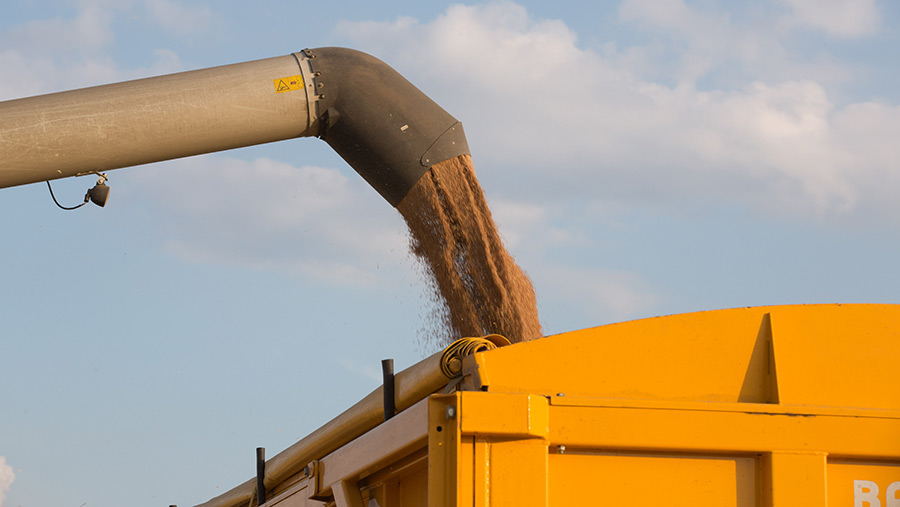Crop forecasts and trade issues put grain prices under pressure
 © Tim Scrivener
© Tim Scrivener New-crop grain prices have come under more pressure on crop and stock forecasts, alongside growing concerns at US-China trade duties being ramped up again.
Chicago, Paris and UK new-crop wheat futures fell to contract lows on Monday (13 May) after the US Department of Agriculture (USDA) released its first new-crop estimates.
This saw London’s November 2019 feed wheat contract fall to and close at £141/t on Monday (13 May), losing 70p on the day, in stark contrast to its high of £179.4/t in late July last year.
The contract had already lost just over £2/t in the week to Friday 10 May.
See also: 6 top tips to minimise compaction at harvest
The USDA numbers included:
- Global maize production in 2019-20 to rise 14.8m tonnes to 1.134bn tonnes, putting total global supply at a record 1.460bn tonnes
- Global wheat production also set to rise for 2019-20 by 45.9m tonnes to a record 777.5m tonnes
- EU wheat production at 153.8m tonnes – a four-year high
- Ukrainian wheat production of 29m tonnes – the largest in almost 30 years
- Russian wheat at 77m tonnes would be the second-biggest crop ever.
- A slight rise in US wheat production, although on a reduced area
- Barley – global production in 2019-20 rising to an 11-year high, mainly on EU production rising by 6m tonnes, to 62m tonnes
Ukraine, Turkey, Russia and Canada are all also forecast year-on-year increases in barley crop size and, despite higher demand form importers, season end stocks are set to rise in 2019-20.
With larger Black Sea crops forecast, this may increase export competition into the Middle Eastern and North African markets, said AHDB Cereals and Oilseeds.
As 2019-20 is likely to see an increased domestic exportable surplus, this could put further pressure UK barley markets, it warned.
The AHDB reported continued falls in domestic old-crop prices, with delivered bread wheat and feed wheat prices (May) falling by £3-£5/t week-on-week amid reduced demand and new-crop expectations.
Old-crop feed barley has fallen further, as East Anglia has now moved to an export-competitive price level.
